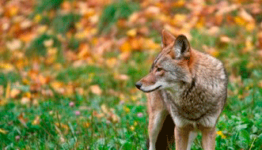Problems of deer overpopulation are very common in the Northeastern part of the United States. If you live in such an area, a single day will not pass without a deer visiting your yard.
Some 87 years ago, the population of whitetail deer in the United States stood at 300,000. Today, that number has grown by 100 folds, bringing the population of deer to 30 million. It has been estimated by scientist that currently, and average of 100 deer occupy a kilometer stretch of space.
Several factors have been identified to be responsible for the phenomenal increase in the population of deer. During the 1920s, the whitetail deer almost became extinct due to uncontrolled hunting. It took the intervention of the government to salvage the situation. Now, whitetail deer that once neared extinction has so grown in population that it has become a problem. Of the several factors responsible for this problem, the most common ones are:
- Absence of predators. Carnivorous animals like cougars, wolves and grizzlies that once fed on weak and new born whitetail deer have become almost non-existent due to human interference with their natural habitat.
- Deforestation: Whitetail deer thrive pretty well amidst deforestation. This is because they live along the edges of their habitat. They are mostly found along road trails, lawns and landscapes.
- Fall in the rate of hunting: It has been estimated that over 6 million deer are hunted down every year. However, this figure barely affects the population of deer because their population doubles every single year. Statistics has it that 12 million fawns are born every breeding season.
- Fluctuation in their population growth. Deer have over the years learnt strategies to increase their life span. Typical of such strategies is giving birth to very few fawns during unfriendly environmental condition.
The ever increasing population of deer has given us a lot of headache to deal with. Roads littered with deer dung and carcasses, ruined landscapes and gardens – the headache is just unbearable.
In the United States alone, deer eat up more than 15 million tons of vegetation including gardens and even farms each year. 150 cases of fatal accidents caused by deer collision are recorded every year. As if that isn’t enough, the presence of deer poses dire threat to your health because they are vectors of ticks which transmit the bacteria that causes Lyme disease.
The effect of the increasing deer population has not only affected we humans, but the ecosystem as well. It has been estimated by biologist that deer alone have wiped out over half of the entire vegetation of Pennsylvania’s forest. Their feeding habit has caused a widespread of certain undesirable plants as they prefer feeding on exotic plants.
Birds have not been left out. With deer eating up trees and shrubs where they nest, certain species of birds are left without no other choice but to fly further away.
There has been a hot debate over the best possible solution to contain this problem. While parties see lethal methods as a viable option, others don’t. Solutions like fertility control which have been tried in the time past only achieved sparing results.
While lethal methods may seem like a viable option, it has its set of drawbacks. Some have suggested re-introducing predators to deer habitat, but the only problem with this is that deer mostly live in suburbs together with humans.
The population of deer has been forever growing, and there appears to be no sign of stopping. This problem has caused a wide spread of diseases like epizootic hemorrhage disease, which affects livestock and humans as well.
As deer population continue to grow, so also has the risk of population crash grown. While population crash might seem like a good thing, it actually catastrophic. A good reminder is the crash of reindeer which happened some years ago. In that year, 95% of reindeer living in St. Matthew Island were wiped out in just one winter season.
If you think a crash in the population of deer isn’t possible, think twice. Starvation is one frequent challenge deer encounter every year, particularly during winter, and in the event winter draws longer than normal, deer crash becomes inevitable.
But since we can’t just watch and do nothing, how best can we solve this nagging problem? Our failure to take action now will inevitably lead to more destruction of our precious vegetation. Population control techniques like contraception takes years to show meaningful results. Using lethal methods will cause deer to die off in large numbers, and this would pose severe health risk to us.
The bottom line is this – whatever method we chose to use should effectively reduce the population of deer without posing any health risk to us and even to the deer we are trying to mitigate.
If you want your area free of deer today, try the Nature’s Mace Deer Repellent. Backed by numerous university studies, this all natural formula has more of the strongest ingredients found in nature.
The technology uses a unique three prong repellency which targets the deers sense of taste, smell, and fear. Specifically chosen organic ingredients also fertilize your yard as a dual action repel and revive system. Click here to try a proven effective deer repellent!











